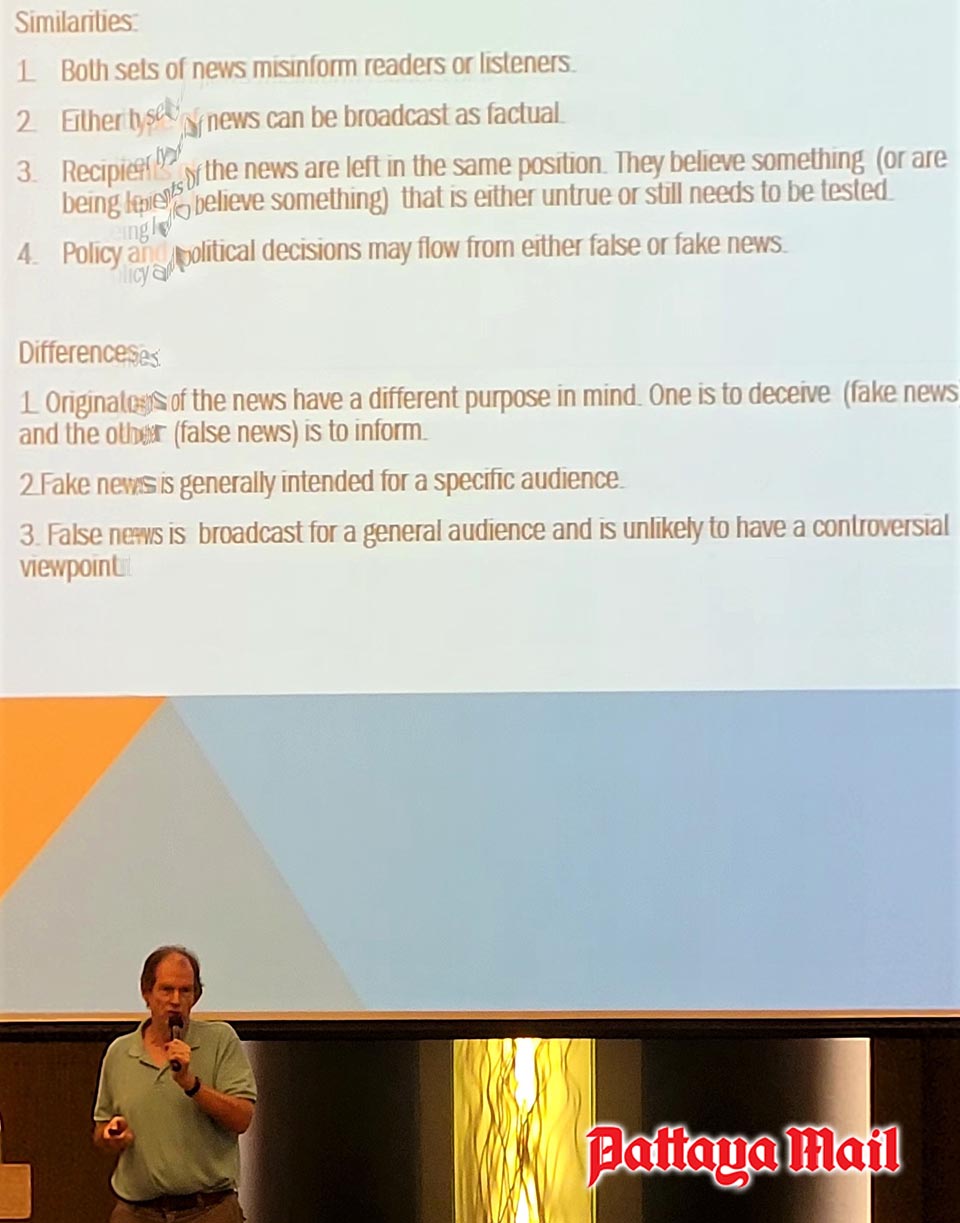
The Pattaya City Expats Club (PCEC) at their Wednesday, September 21st, meeting learned how false news is different from fake news. Journalist Patrick Mattimore who previously spoke to the Club about the news industry talked about “Constructing a False News Narrative.” His previous presentations to the PCEC were: Censorship doesn’t work at a psychological level and if it bleeds, it leads.
Patrick is a member of the Society of Professional Journalists and has written commentaries for a variety of publications, daily newspapers, professional magazines, and weeklies. His areas of expertise are law, psychology, and education. He taught high school psychology for many years in the US, and was an adjunct professor of law in the Temple University/Tsinghua University LLM program in Beijing, where he also taught psychology at a private college.
Patrick began by noting the difference between what is “fake news” and “false news”. The former is usually presented on purpose knowing it is false, aimed at a particular audience, and is intended to influence and/or reinforce certain views. Whereas, “false news” is faulty information in which the spreaders (normally journalists) are genuinely attempting to present a true picture for readers. The spreaders may have biases or points of view about the information but they believe they are providing readers with an objective story.
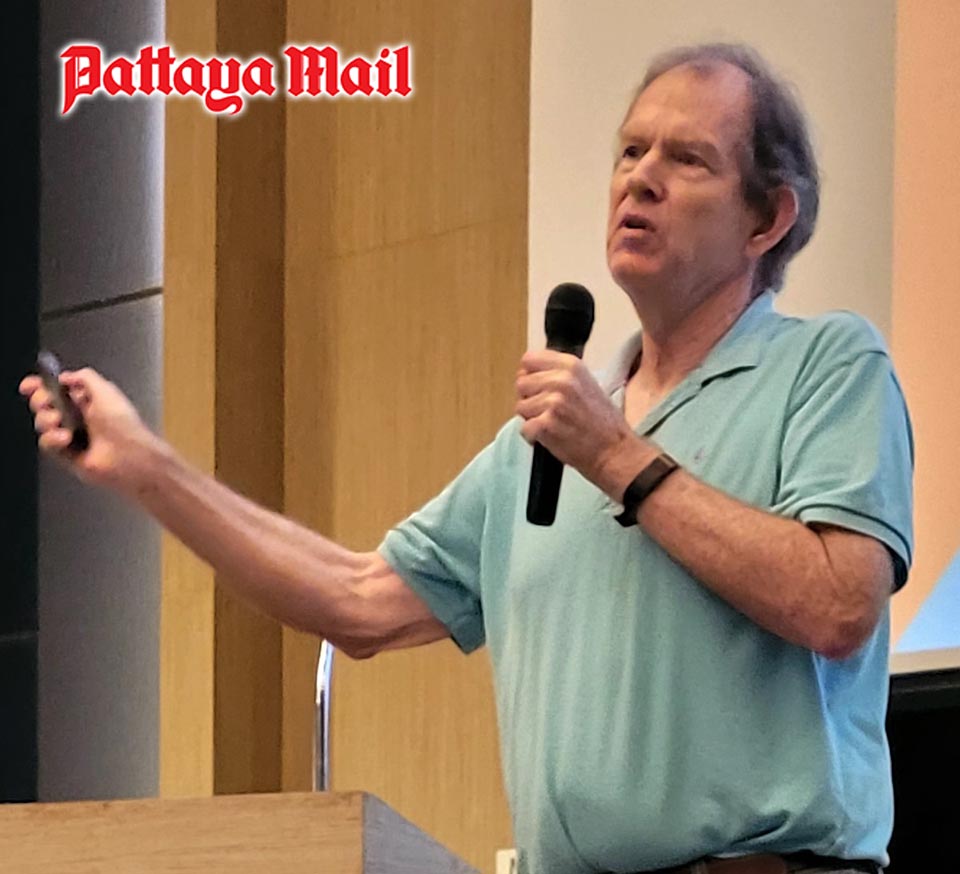
He noted there are similarities between the two; both sets of news misinform readers or listeners. Further, either type of news can be broadcast as factual and recipients of the news are left in the same position; they believe something (or are being led to believe something) that is either untrue or still needs to be tested.
He provided some examples of false news. One being the Seattle Windshield Pitting Epidemic which was the reporters’ and others seeing things that were not there and attempting to explain why they are. Although natural windshield pitting had been going on for some time, it was only when the media called public attention to it that people looked at their windshields and saw damage they had never noticed before. This led to attempts to explain the causes, based more on supposition rather than facts. Other examples he offered related to suicides including France Telecom employees, Taiwan Foxconn employees, and people in Thailand due to Covid lockdowns. In each of these cases, Peter commented on how the facts did not support the news of what was causing the suicides.
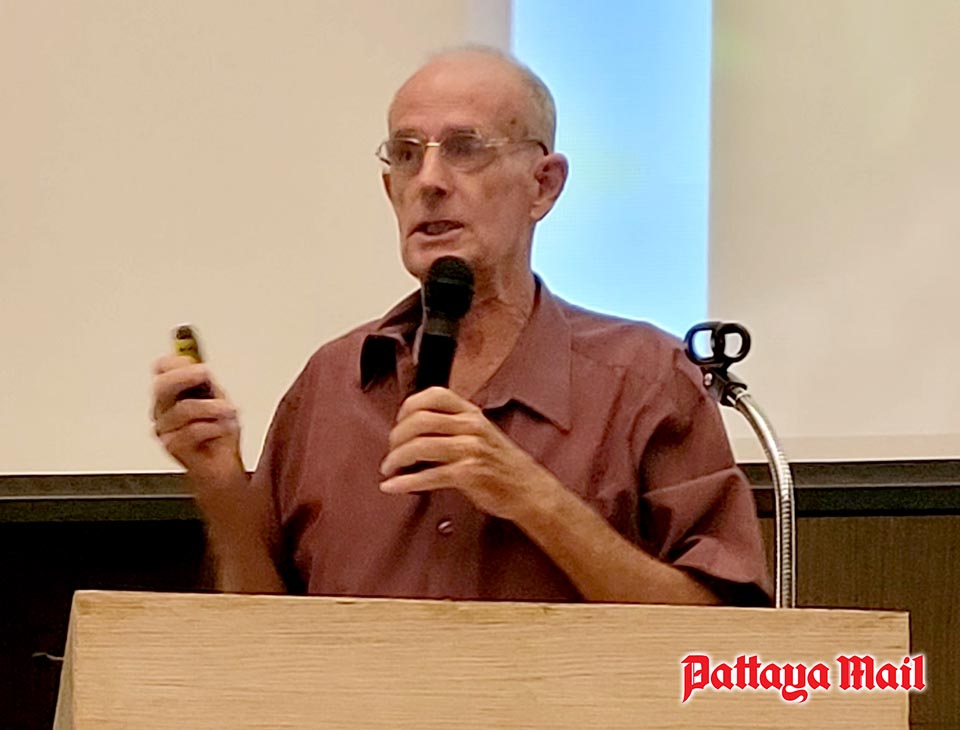
He concluded with the question Why care? Because he said, it can lead to bad policies or decisions such as prison terms being given to France Telecom Executives. After his presentation there was a lively discussion with the audience commenting and citing other examples of both fake and false news.
Patrick’s presentation was followed by Club Member Stuart Saunders who has previously given presentations to the Club about some of his inventions. He presented a video of his invention of a new drive for electric vehicles and commented on the difficulties in trying to get such inventions into production.
MC Ren Lexander then brought everyone up to date on upcoming events which was followed by George Wilson conducting the PCEC’s Open Forum where questions are asked and answered about Expat living in Thailand. For more information about the PCEC, visit their website at https://pcec.club. Video of Peter’s and Stuart’s presentations is available on the PCEC YouTube Channel at https://pcec.club and https://www.youtube.com/watch?v=e0kXjD9ub4c, respectively.
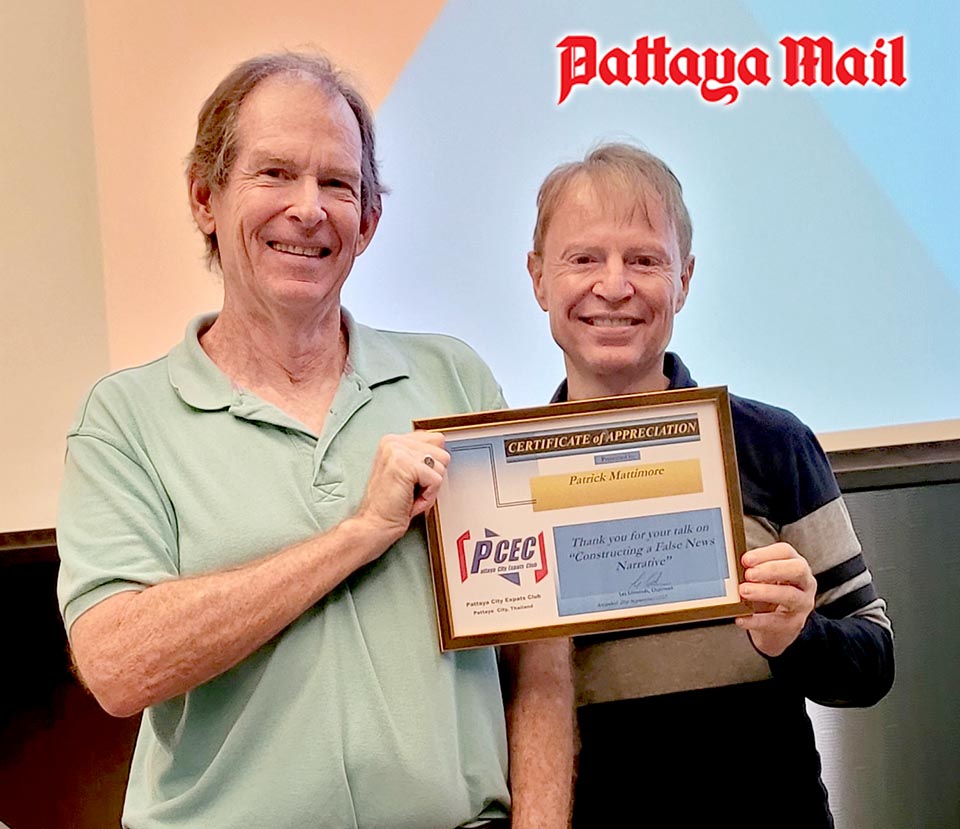
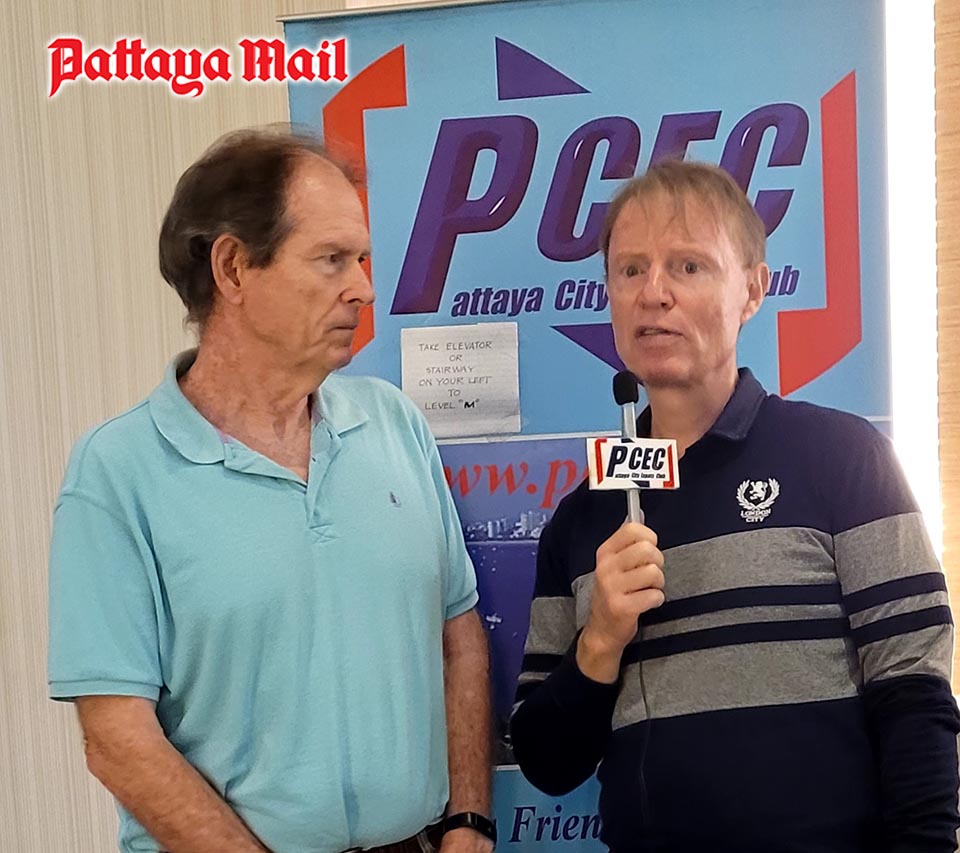
 |
 |
 |





